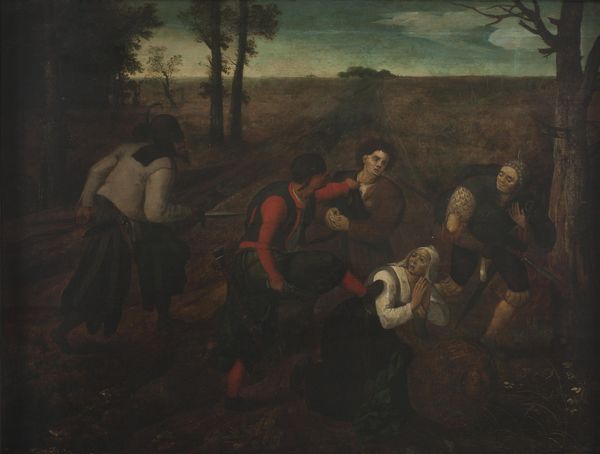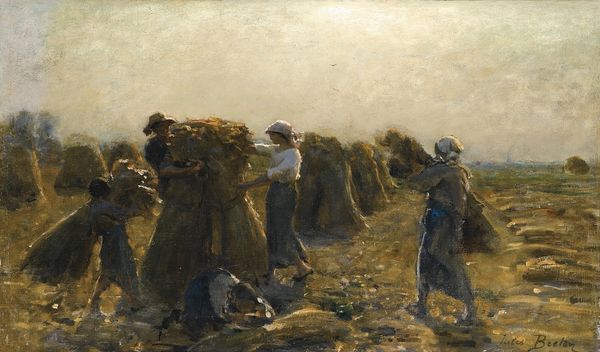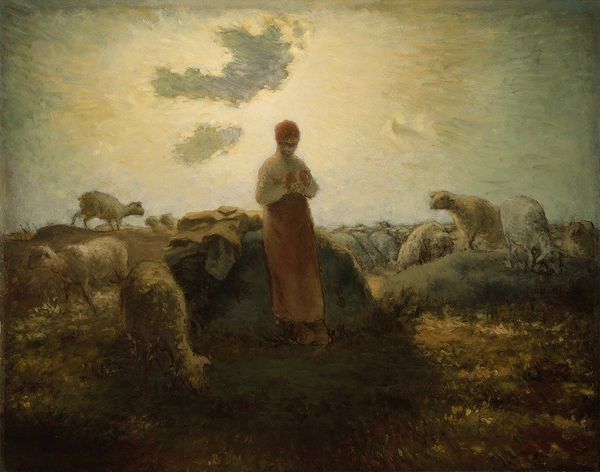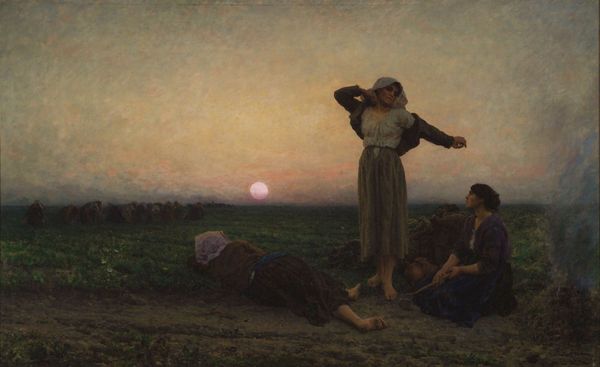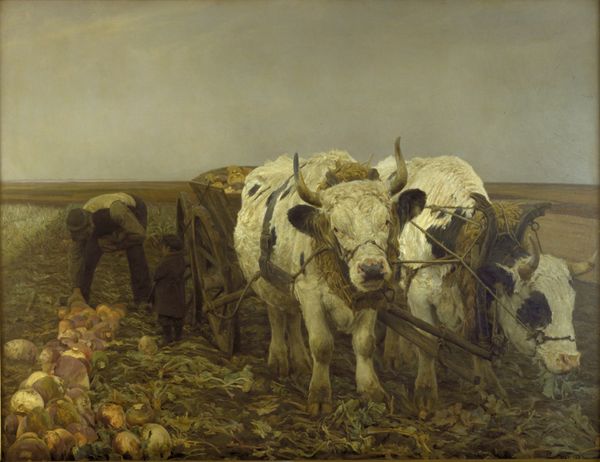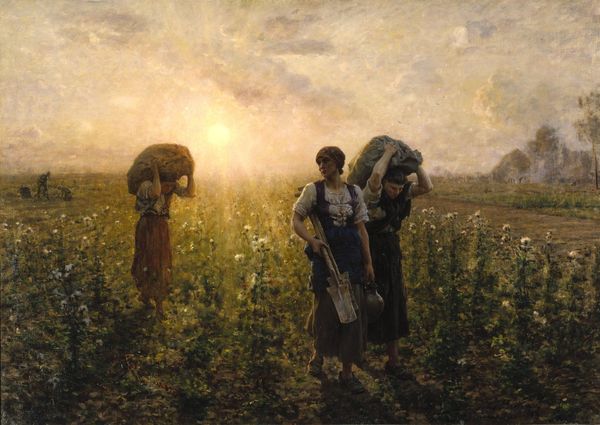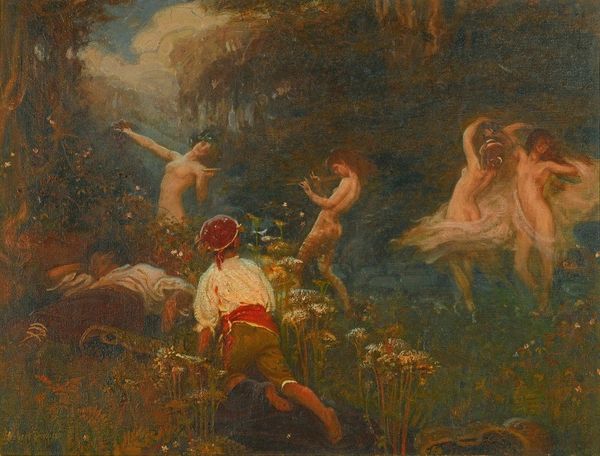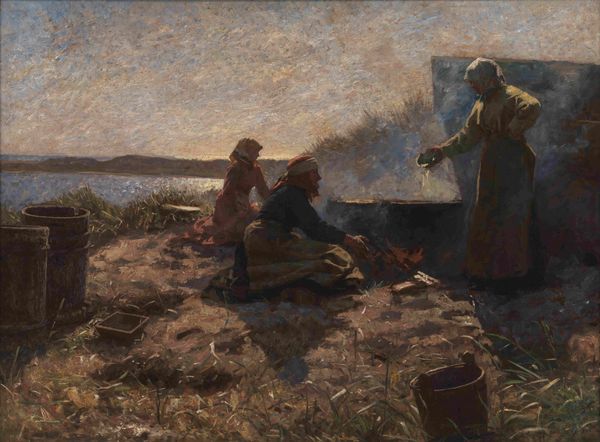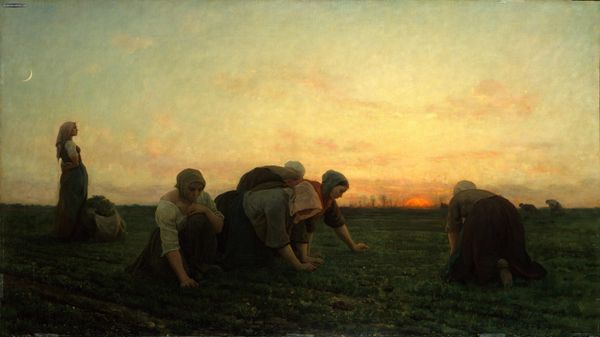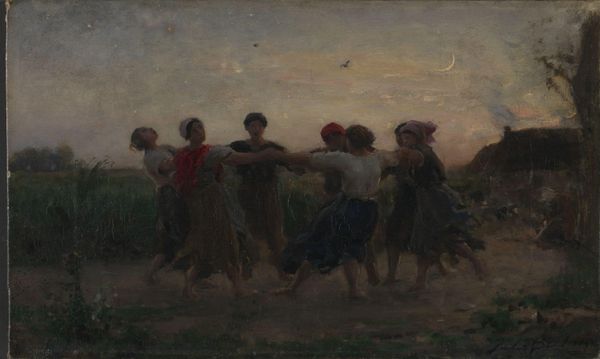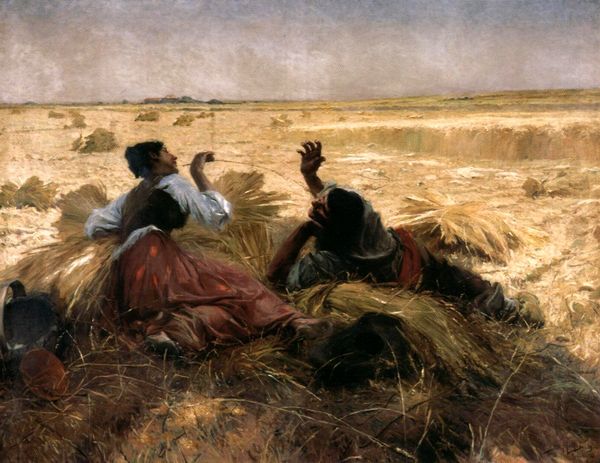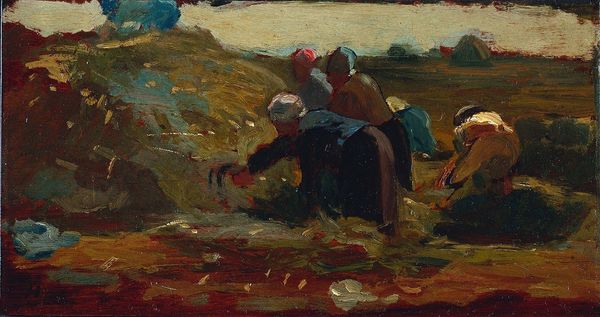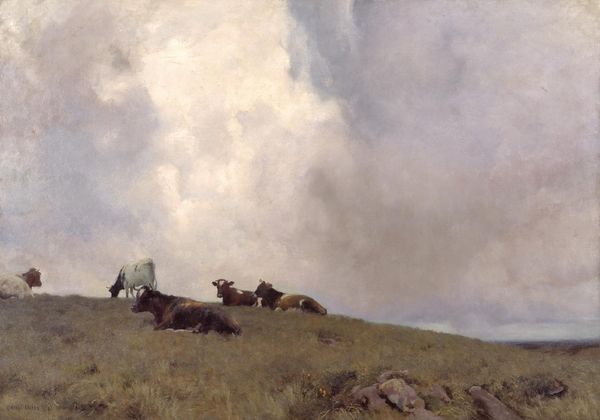
Dimensions: 33 x 57 1/8 in. (83.82 x 145.1 cm) (sight)50 x 74 1/4 x 5 1/4 in. (127 x 188.6 x 13.34 cm) (outer frame)
Copyright: Public Domain
Curator: Here we have Giovanni Segantini's "The Pumpkin Harvest" from 1897. Executed in oil on canvas, this work currently resides here at the Minneapolis Institute of Art. Editor: My immediate impression is of a stark contrast. The foreground is this vibrant field of pumpkins, life bursting forth, but then you notice this somber background. Curator: Absolutely. Segantini, known for his plein-air landscapes, presents us with more than just a picturesque scene. Consider the symbolism of the pumpkin itself. Often tied to harvest celebrations, abundance, and prosperity. How do you interpret its symbolism? Editor: It's fascinating how the abundance seems almost laborious. These women bent over, harvesting. It speaks to the unseen labor often essential to create any idealized symbol of prosperity and calls to question labor's distribution across societal sectors. The light makes it appear so arduous, particularly when placed against the architectural darkness. What purpose did he have in doing so? Curator: Precisely. Notice how the diffuse light and muted tones contribute to the overall feeling of toil? Segantini, deeply affected by the social realities of the working class in the late 19th century, conveys the quiet dignity of their everyday struggles. This contrasts with his symbolist pieces. Editor: And that architecture, or rudimentary buildings, that act as dark contrast to the pumpkins almost suggests how the products of the natural world inevitably lead to societal changes for humans, no matter how arduous or exploitive. There seems to be both commentary and criticism inherent in this approach. Curator: I agree completely. The painting seems to offer insight into the complex interrelationships between labor, architecture and nature that so profoundly defined fin-de-siècle Europe. Editor: Reflecting on this, the scene carries such weight. It makes me ponder on the continuous intersection between nature, labor, and societal constructs that are continually playing out over time. Curator: And for me, it underscores the remarkable ability of artists to imbue seemingly simple scenes with layers of deeper meaning, urging us to see beyond the surface and appreciate the hidden narratives embedded within everyday life.
Comments
minneapolisinstituteofart almost 2 years ago
⋮
"Within the lifetime of a single generation, a rustic and in large part wild landscape was transformed into the site of the world's most productive industrial machine. It would be difficult to imagine more profound contradictions of value or meaning than those made manifest by this circumstance." So writes Leo Marx in his touchstone book The Machine in the Garden (1964). Today, a life without technology is unimaginable. But in the 19th century, the tension between the pastoral ideal and the rapid alterations of the landscape wrought by the Industrial Revolution were a central concern. Segantini expresses the anxiety felt by the unsettling effects of the machine's sudden entrance into the landscape. The hot steam from a thundering locomotive sweeps over his pumpkin field forcing the workers to turn away. The artist portrays the train's dark silhouette as an intrusion on what would otherwise be a tranquil rural scene.
Join the conversation
Join millions of artists and users on Artera today and experience the ultimate creative platform.
